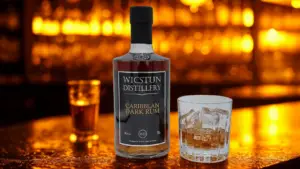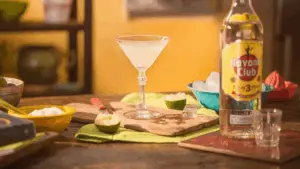In the sunlit highlands and valleys of Jalisco, Mexico, the spirit of tequila is born long before it ever reaches the glass. Before dawn, the agaveros, masters of the blue agave fields, begin their daily ritual with the coa de jima, a sharp, flat-bladed tool that reflects the first light of morning. Each movement is measured and precise, a rhythm learned through generations. As they strip away the plant’s long, spiny leaves, the heart of the agave, the piña, is revealed, glowing beneath the rising sun. This is more than farming. It is heritage in motion, a living expression of patience, respect, and connection between people and land. In every cut, in every harvested plant, the spirit of tequila takes shape, embodying the history, pride, and craftsmanship that define Mexico’s most storied drink.
The Human Heart of Tequila- The spirit of tequila
The spirit Tequila, Mexico’s most celebrated spirit, is shaped not only by volcanic soil and blue agave, but by the people who dedicate their lives to it. The agaveros are more than farmers. They are keepers of knowledge who inherit their understanding of the land through family and experience rather than through books or formulas. They can tell when a plant is ready not only by its height or age, which can reach up to eight years, but by the color of its leaves, the texture of the piña, and even the scent carried on the morning air. Their connection to the fields is both instinctive and spiritual, guiding every harvest with precision and care.
From Field to Oven
When the time comes to harvest, the agave begins a transformation that bridges tradition and science. The piñas are gathered and slowly roasted in stone ovens or modern autoclaves to convert their natural starches into fermentable sugars. As they bake, the air fills with a deep sweetness that signals readiness. Once cooled, the piñas are crushed to extract their juice, often using traditional tahona stone wheels that date back centuries. This liquid, known as mosto, is left to ferment naturally, allowing wild yeasts to bring the agave’s essence to life.
The Art of Distillation and Aging
The fermented mosto is distilled twice, a process that clarifies and refines the spirit. The first run produces a rough, cloudy liquid called ordinario, while the second distillation yields the clear tequila that will be bottled or aged. Some producers choose to bottle immediately as blanco, showcasing the raw, vegetal purity of agave. Others allow the spirit to rest in oak barrels, where time and wood soften its edges, creating reposado with gentle spice or añejo with notes of caramel and smoke.
The character of each tequila reflects the choices of its makers, yet all are built on the agaveros’ careful beginnings in the fields.
A Craft Rooted in the Land
The heart of tequila’s authenticity lies in how personal its creation remains. While modern technology has shaped parts of production, the best tequilas continue to emerge from small-scale operations where attention to detail guides every decision. Soil composition, rainfall, and sunlight differ across Jalisco’s regions, producing distinct expressions. The red clay of the highlands gives fruitier, softer spirits, while the rocky lowlands produce tequilas with mineral-driven depth. The agaveros understand these variations instinctively, adapting each harvest to the rhythm of nature rather than forcing uniformity.
Respect Between Earth and People
Among the agaveros, a saying endures: “La tierra da, pero hay que saber pedirle.” The land gives, but you must know how to ask. It is a philosophy that defines their relationship with the soil, a reminder that cultivation demands respect, not dominance. Modern distilleries are beginning to acknowledge this bond by honoring the agaveros on their labels, recognizing them as the true custodians of authenticity. Theirs is a quiet artistry that anchors an entire industry in integrity and gratitude.
The Spirit Beyond the Bottle
To drink tequila is to taste a living dialogue between the land and its people. A crisp blanco tells of immediacy and vigor. A smooth reposado speaks of balance and patience. A rich añejo carries whispers of time, oak, and devotion. Every bottle holds the legacy of those who shaped it. For the Barlist community, understanding tequila means looking beyond the glass to the fields where it begins, to the hands that nurture the agave, and to the tradition that turns labor into culture.
Tequila’s true beauty lies in its harmony between craft and nature. It is a spirit of both place and purpose, sustained by generations who see the land not as property but as a partner. Every sip is a testament to their respect, resilience, and the enduring artistry of the agaveros of Jalisco.


